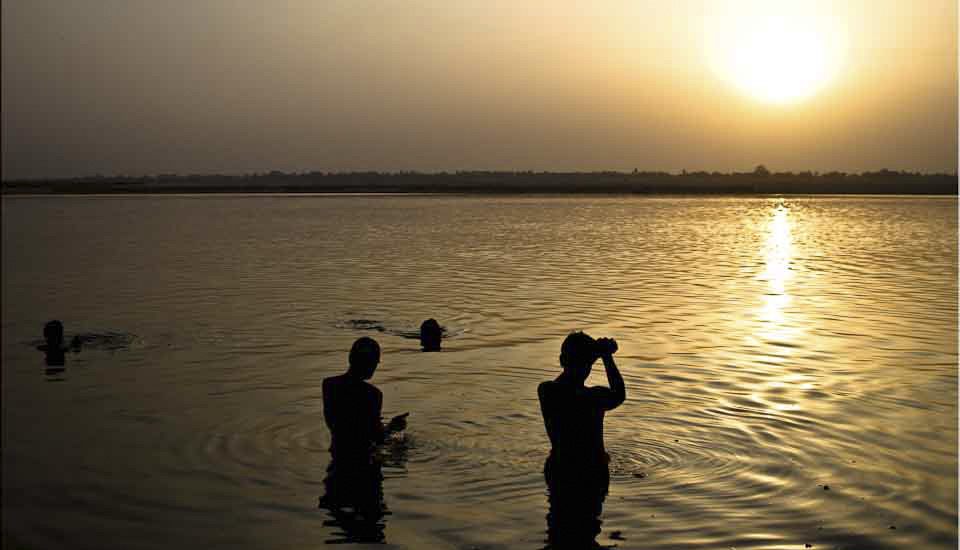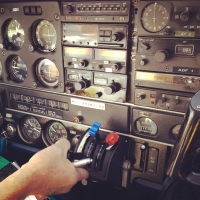.jpg)
Planting Rice
It’s back-breaking work, planting rice, but Balinese farmers still have a smile for visitors.
Rice is absolutely central to Balinese society.
In Bahasa Indonesia, the lingua franca in Bali, nasi, the word for rice, also means “meal”. But in Bali, rice is so much more than that: the whole process of growing and harvesting rice is at the very core of the island’s religion and culture.
Since around 900 CE, the Balinese have followed a system of rice irrigation called subak, which arises from the Balinese Hindu philosophical concept of Tri Hita Karana. Tri Hita Karana, which translates as “three causes to prosperity” or “three causes of well-being”, seeks to promote harmony among people, harmony with nature and the environment, and harmony with God. Subak is “a complex cooperative irrigation system which incorporates traditional ecologically-sustainable land management under the authority of the priests in the water temples”, a system so unique that it was UNESCO-listed in 2012 for it’s cultural importance.
Rice cultivation in Bali happens in a continuous cycle, with neighbouring fields often at different stages of maturity. Balinese farmers always plant new fields before harvesting all the ripened ones (see: A Ride through the Rice Fields). The Balinese are the most prolific rice growers in the Indonesian archipelago; this, and their community-based egalitarian farming practices and equal distribution of resources, has allowed them to spend time in artistic and cultural pursuits.
Any time of day or year, you will find rice in the fields, and people tending it.
My husband and I were walking on a main road towards Ubud on a January afternoon when a Balinese man approached us and offered to take us for a walk through the rice terraces. This is the sort of thing that happens in Bali: strangers will offer to take tourists places, and it is usually ok …
.jpg)
Impossibly Green: New Rice
Around the hills of Ubud, houses and boutique hotels border the rice terraces.
.jpg)
Green and Yellow : Starting to Ripen
Every rice paddy is at a different stage of growth.

A Giant Wood Spider (Nephila Maculata/Nephila Pilipes)
Nephila comes from the Ancient Greek for “fond of spinning”: a tribute to the the lovely, delicate webs that golden silk orb-weavers make.

Working the Fields
Rice planting, transplanting, and harvesting is time-consuming work. Men do the planting and transplanting, while women do the harvesting.

I Nyomen
We know that our impromptu guide – Nyomen – was a third-born child. By Balinese convention, children are given one of four main names according to their birth order. The “I” in front of his name indicates male gender (females often have “Ni” as a prefix) When they are older, children get a personal name, but these names are not so commonly used.

Flooded Sawah
Rice fields – or sawah – are flooded at regular intervals to soften the ground for planting and to nurture the new growth. The controlled flooding uses water diverted from streams and man-made water channels.

Ducks in the Rice Field
After the harvest, ducks are allowed into the sawah. They clear the fallow fields of eels, bugs, left-over grains of rice, and emerging weeds.

Working the Rice Fields

Ducks in the Rice Terraces
As well as cleaning the fallow paddies, ducks fertilise them as they are herded through.

Rice Terraces

Break Time
Rice is seeded in small fenced off areas, where it stays until the seedlings sprout and grow.

Reflections in the Rice Fields

Transplanting Rice
When rice seedlings are big enough, they are transplanted by hand into a flooded rice paddy. This happens with remarkable speed and precision, resulting in neatly spaced rows.

Shrine in the Rice
Shrines to Sri, the Rice Goddess, are dotted around the rice paddies.

Ripening Rice

Green Rice

From the Water Up

Ducks in the Rice
Although the demands of tourism have resulted in new development, including guest houses amid the sawah, the fields around Ubud still feature a lot of traditional farm buildings.

Butterfly

Ducklings
As we picked our way carefully between the paddies, I could hear the most incredible noise. Some kind of old farm machinery? I asked Nyoman. He laughed, and took us up a small rise to a shed, where the up-and-coming crop of ducks were quacking a right racket!

Rice Paddies
Grassy hillocks separate the different layers of rice fields. They make for slippery walking!

Sheds in the Rice Paddies
Even though houses sit on the edges of the rice fields, shelters or sheds are shattered around.

Little Spice Finch – Lonchura Punctulata
Commonly known as nutmeg finch, scaly-breasted munia, or spotted munia, tiny little finch hop all over the ripening rice.

Giant Wood Spider (Nephila Maculata/Nephila Pilipes)
A healthy environment is host to a range of species; wood spiders are non-aggressive members of the golden orb-web spider genus.
After a long walk through the peaceful greens, we came back out onto a bustling main street near Ubud, just as our new friend I Nyomen had promised.
The Indonesian government has tried to further increase rice production: by introducing new varieties, by deregulating the subak irrigation system and ignoring the rest periods and irrigation schedules, and by promoting artificial pesticides and fertilisers.
Unfortunately, these more aggressive agricultural practices – and the demand for land for tourism – have put a unique system, one that has prospered for over a thousand years, under threat. I can’t help but wonder how much longer those fields, in their countless shades of green, will last.

I only hope the Balinese can protect their beautiful terraces and sustainable farming practices – for the benefit of all of us!
‘Till next time.
Photos: 29January2017































.png)


What a pleasent afternoon walk